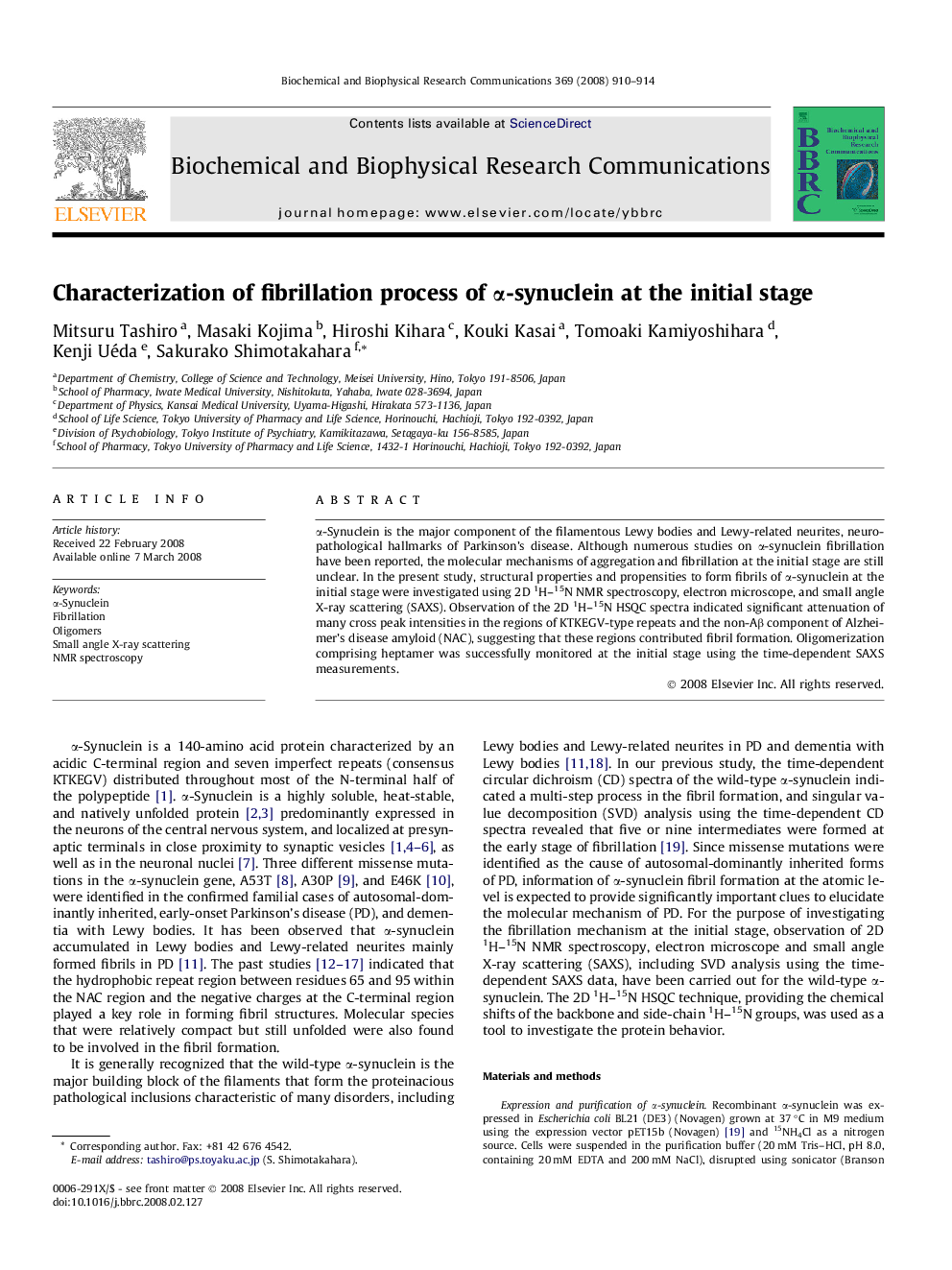| Article ID | Journal | Published Year | Pages | File Type |
|---|---|---|---|---|
| 1935995 | Biochemical and Biophysical Research Communications | 2008 | 5 Pages |
α-Synuclein is the major component of the filamentous Lewy bodies and Lewy-related neurites, neuropathological hallmarks of Parkinson’s disease. Although numerous studies on α-synuclein fibrillation have been reported, the molecular mechanisms of aggregation and fibrillation at the initial stage are still unclear. In the present study, structural properties and propensities to form fibrils of α-synuclein at the initial stage were investigated using 2D 1H–15N NMR spectroscopy, electron microscope, and small angle X-ray scattering (SAXS). Observation of the 2D 1H–15N HSQC spectra indicated significant attenuation of many cross peak intensities in the regions of KTKEGV-type repeats and the non-Aβ component of Alzheimer’s disease amyloid (NAC), suggesting that these regions contributed fibril formation. Oligomerization comprising heptamer was successfully monitored at the initial stage using the time-dependent SAXS measurements.
